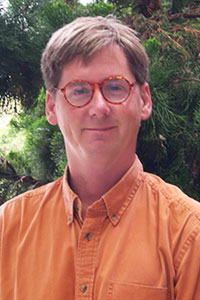 By Doug Struck
By Doug Struck
“Dave” Keeling was a heroic figure among climate scientists, the first to do the hard work proving the theory that man’s choice to fuel an industrial revolution by burning oil and coal is changing the atmosphere. He died in 2005.
His son has continued the father’s long work at Scripps Institute of Oceanography at the University of California San Diego. And Ralph Keeling is blunt about what that work shows.
“If we are worried about dangerous climate interference, we should accept the fact that we are already committed to that. We have to figure out what to do now,” Keeling told an audience at Harvard University Center for the Environment Monday night.
The speech was centered on what Keeling called “a kind of somber moment … a point we hoped we would never get to.” In April, the level of carbon dioxide in the atmosphere averaged 401 parts per million — far above the range of 180 to 280 that defined the atmosphere for 800,000 years until industrialization began in earnest around 1880.
There is a direct link between the level of carbon dioxide in the atmosphere and the temperature of the planet, a link similar to the heat buildup inside an enclosed greenhouse.
The temperature rise lags behind the gas buildup by years. We already have pumped so much carbon dioxide and similar gases into the atmosphere, Keeling said, there is no question we will exceed a global average temperature rise of 2 degrees Celsius, or 3.6 degrees Fahrenheit. Scientists say change greater than that will severely affect human society.
Earth has not likely seen carbon dioxide levels this high for an estimated 4 million years, noted Daniel Schrag, head of the Harvard center. “That means no human being has ever witnessed this atmosphere,” Schrag noted. “So breathe in deeply.”
Former Vice President Al Gore, who is traveling in Asia, sent video remarks to the event. He recalled his “astonishment” at seeing the early versions of the carbon dioxide graph, dubbed the Keeling Curve, as a Harvard student.
“We have been recklessly spewing 90 million tons of CO2 into the atmosphere every day as though it were an open sewer,” Gore said in his videotaped comments. “The favorable conditions on earth that have given rise to the flourishing of civilization … may be at risk.”
Keeling recalled that his father, a chemist, gravitated to geophysical studies because “he liked to be outdoors. He was having fun.” David Keeling realized that while the atmospheric effects of burning fossil fuels had been theorized in the century, no one had accurately measured the carbon dioxide levels. He invented a technique for doing so, and began taking regular readings from Mauna Loa Observatory in Hawaii, where the atmosphere was relatively free of pollutants.
His observations revealed the seasonal “breathing” by the earth that decreases carbon dioxide during the northern hemisphere’s summer, when foliage sucks up the gas, and increases in the winter. But it also revealed a steady climb in average CO2 that began at 313 parts per million in his first readings and accelerated through the years.
The numbers tracked by Keeling have become iconic milageposts of our failure to reduce greenhouse gas pollution. The climate group 350.org organizes worldwide protests around advocacy of a 350 carbon dioxide limit, and the last month’s daily average exceeding 400 parts per million has been seen as a kind of dismal reckoning point.
“What we need to do is bend the curve. The problem is the curve is bending in the wrong way. We need to stabilize it at 450 or 500 [parts per million],” Ralph Keeling said. He said we will reach 450 in about 20 years, and there is little indication of the kind of severe reduction in our fossil fuel use that would stop the rise there.
“To stabilize at 450 … we have to cut by something like 57 percent,” Keeling said. “In my view we are already pretty well committed to 500.” The signs of change already are occurring — a dramatic shrinkage of the Arctic ice cap, large temperature swings in the polar regions, changes in drought and rainfall and record-breaking heat around the world.
“Something is happening,” Keeling said, “in a big way.”
Doug Struck, a journalist for 35 years, reports on environmental matters from Boston. He can be reached at doug@dougstruck.com.